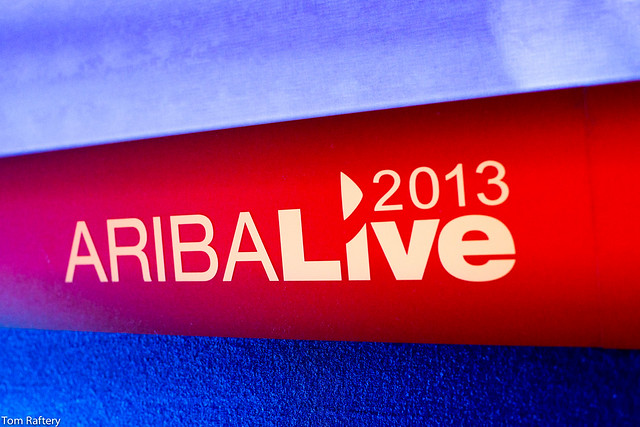I attended the AribaLive event in Berlin last week – this is the European conference for Ariba customers and partners to share stories, network and learn from one another.
Ariba is a company which provides electronic sales and procurement solutions for companies. There are over 1 million companies in 190 countries using Ariba. Customer companies mentioned or presenting included Clariant, Solvay, Disney, Deutsche Bank, Astra Zeneca, Fujitsu, Aviva and EADS. Naturally I was curious to hear how their customers fared from dematerialising parts of their buying and selling processes.
I wasn’t totally clear on some of the advantages the Ariba offers buyers and sellers until Ariba President Kevin Costello, in his keynote explained it with a good analogy to the likes of Facebook, Amazon and eBay. As Costello said, Facebook has completely changed how people connect/reconnect. Similarly, eBay and Amazon have totally transformed how people shop for goods. I knew exactly what he meant as I’ve recently bought a new camera. I started by checking camera review sites and Amazon reviews to find the best camera for my needs. I then went to both eBay and Amazon to identify the best deal, from the most reputable seller. Being able to see peer reviews not just of the camera, but of the sellers as well, meant I was very confident when I decided to buy my secondhand camera, that I would get a good product at a good price.
In the same way, Costello said, the Ariba Network brings huge transparency to enterprise buyers and sellers, allowing them to make purchasing, or sales decisions more efficiently and with fewer concerns. In fact, the consumerisation of business commerce was a term used throughout the event.
Several customer presentations followed with organisations like Spanish building company FCC mentioning that they both source €2 billion, and cut 80,000 electronic invoices with their Ariba system annually. They estimate they are saving 10% per annum by using Ariba.
Apart from the efficiencies of using electronic solutions, how else does one benefit (to the tune of 10%, for example) by using Ariba?
Well part of the answer was provided in the talk given by EADS Vice President of Accounts Payable, Bob McCartney. He talked about the cost of dealing with incoming invoices for EADS. According to McCartney, dealing with an invoice manually costs EADS €15, running it through OCR brings the price down to €4 per invoice, while the price of dealing with e-invoices is €2. That is massive – electronic invoicing is half the cost of OCR’d invoices and seven and a half times cheaper than manual invoices. Right there you see a huge business case for e-invoicing.
Other advantages of electronic invoicing outlined by McCartney were – a recurring 22% cost saving, increasing on-time payment of suppliers, improved visibility/forecasting of the company’s cash position, and improved relations with suppliers (more process transparency, as well as on-time payments).
Finally, Ariba’s Supplier Risk Management solution was interesting to learn about as well. This solution allows users to, for example, figure out in the event of a natural disaster in a distant part of the world, what the potential impact may on your organisations supply chain. Though a more interesting use case, given it can drill down several layers into your supply chain may be avoiding the use of conflict minerals in your products, for example.
Full disclosure – Ariba paid my travel and accommodation to attend this event.


